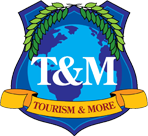Insights into the wisdom of Stanley Plog
January 2006
One of the great research minds and tourism theorists is Stanley Plog. He recently published a new book called “Leisure Travel” and gave Tourism Tidbits permission to feature some of his insights in this month’s edition. What better way to start the year off with some of the predictions from Plog research? Please note that all of the material for this month’s Tourism Tidbits is based on Stanley Plog’s research and writings. For more information about the book, please see the book section of Tourism Tidbits listed below.
Plog’s methodology combines both demographic research with psychographic research. This unique combination allows him to pinpoint problems and offer unique tourism insights into future trends.
Here are some of the ideas he presents in “Leisure Travel”:
- Sports will continue to offer an important niche market, but be careful of your market. For example, Plog notes that too many cities are building golf courses while the golfer population has remained stable. Golf’s success as a tourism attraction, rather than a recreational vehicle for those already in the community, may depend on the prestige and upscale appeal of that community.
- Cruises. Plog predicts continued strength in the cruise industry. The one thing he does not mention is what might happen should there be a terrorist attack on a cruise line or if some form of illness attacks the cruise industry.
- The continual aging of the population means that some destinations will benefit and some may suffer. Among those attractions that will have to reinvent themselves due to population aging are theme parks and nighttime entertainment that focuses on the young. On the other hand, Plog predicts that cultural institutions, gambling locations and upscale restaurants and entertainment centers will benefit from an aging population.
- The relationship between beautification, economic development and security will continue to grow. In order to take advantage of benefits of beautification, Plog suggests that locales work to improve the image of their highway system through vegetation (where appropriate) or desert-scapes (where necessary), developing clean-up projects and teaching everyone in the community that a clean environment is a safe environment. Develop your tourism plans in such a way that it emphasizes beautification ideas as pedestrian and bicycle paths, and an architectural and environmental overall regional master plan.
Plog provides his readers with a number of suggestions and predictions for successful tourism marketing among western countries that have an aging population and a higher demand for travel products. Among his suggestions are:
- Protect the uniqueness of your area. Do not replicate someone else, be yourself. That means that if you have a culture or architecture that is unique to your part of the world, preserve it rather than destroying it.
- To maintain a sustainable tourism industry, try not to overcrowd an area with too many hotels, fast food restaurants, etc. The higher the density, the greater the probability that the area is beginning a tourism industry decline. While it may take a number of years for this decline to set in, the seeds of the tourism decline have now been planted.
- An aging population will demand greater levels of service excellence. That means that greater emphasis will be needed in areas of training, not only for front-line personnel, but also for everyone who may come in contact with tourists, such as police, first responders, and local citizens.
- Do not skimp on quality of the infrastructure. Make sure that buildings meet and exceed your community’s codes. When renovating an older building make sure that the new construction matches the older architecture, and when building a new building make sure that new construction does not destroy the artistic and architectural harmony of the area.
- When it comes to activities, develop a tourism industry that offers variety. No one attraction can please everyone. For destinations to succeed in the twenty-first century they will have to offer safe and secure locations with multiple products. Product development is the key to a destination’s longevity.
- Do not discard local cultures and traditions. These are the elements that make a destination unique and worth visiting. Tomorrow’s travelers are seeking the unique and that which is different from what they have back home. Do everything possible to preserve local customs and traditions and make sure that the local population understands that these traditions and customs are a valuable part of the local tourism industry.
- Care for your ecology by protecting panoramic vistas and build in such a way that visitors and locals alike have a sense of “breathing space.” Make sure that your destination has an overall master plan rather than simply building for building sake. One of the fastest ways to destroy a tourism destination or attraction is through poor planning and urban sprawl.
- Make sure that the local population understands how it benefits from tourism. Often, people in the tourism industry simply assume that all locals see the benefits of tourism. Often they are simply wrong. Public servants such as police and other first responders often see visitors as simply extra work. In a like manner, the public does not always understand the relationship between tourism and the strength of the local economy. Make sure that as a tourism official you work with local public servants and develop new projects in such a way that the local population not only understands the benefits of the project but also supports it.



